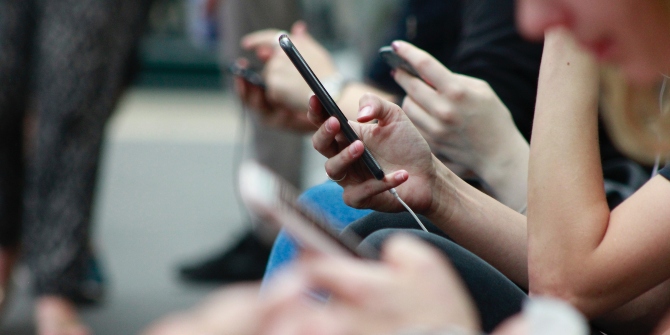
Imagine you learn about a concert through social media. You saw a friend post that she is excitedly planning to attend. How do you decide whether you want to go? Does it matter whether the concert is a popular artist performing in a major arena or an indie band performing in a neighbourhood venue? The analysis in my paper suggests that it should. If you like concerts better when more friends show up, then your friend’s enthusiasm should be a strong tick in the plus column. However, if the artist is famous and popular, you might start to wonder why your other friends haven’t posted yet. Maybe they’re just not that interested. If it’s the indie band we’re talking about, it’s more likely your other friends just haven’t heard about it yet. If you post that you’re going, you might induce more of them to come.
Suppose instead that you learn about the concert from a poster. How does your thinking change? On balance, your average friend might be more inclined to see a popular artist. Absent the social media post, you might be sceptical whether any of your friends will go to the indie concert. This kind of reasoning has implications for how advertisers should promote their products. In some cases — like the popular artist concert — learning through word of mouth provides relatively little information about others’ plans. It might even be a negative signal. When interest is less expected, word of mouth can help friends coordinate, spreading awareness of others’ intentions.
I look at a mathematical model of a piece of information spreading across a social network. Each person who becomes aware of this information gets to choose whether to use it and share it with their neighbours. Whether someone wants to use, and share depends on whether she expects her neighbours to join in. I’m interested in how far and how fast an idea can spread, and what makes something more likely to go viral. One key observation is that what really matters is not the social network itself, but the sub-network among people who might want to use the information — going viral requires a sufficiently dense graph and a little bit of luck. Whether the information reaches a particular person depends on the preferences of her neighbours. Because of this, when the idea reaches me, the fact that it got to me can tell me something about my friends’ preferences. I show that larger cascades provide a more negative signal — I should infer that my friends who haven’t yet seen it are less likely to be interested.
A few more surprising findings emerge from the analysis. One is closely related to what’s called the “friendship paradox.” Loosely speaking, on average your friends are more popular than you. This is due to a selection effect — popular people are over-represented among a typical set of friends. When there is a reason for neighbours to coordinate, the friendship paradox affects incentives, which can lead to counterintuitive effects. While a more equal distribution of connections in the network means more people are connected to information sources, this can also reduce incentives to use and share a new idea. As a result, adding links to the graph might actually result in fewer people hearing about an idea.
More and more, firms, governments, and other organisations rely on social networks to spread information. From launching the latest phone app, to introducing microfinance in rural India, word of mouth is a crucial tool. When people want to do what their friends and neighbours are doing, word of mouth not only helps to raise awareness, it can help people coordinate their actions. Niche products and innovations benefit more from this last effect, helping explain at least in part why word of mouth seems to play a larger role for less mainstream ideas.
♣♣♣
Notes:
- This blog post is based on the author’s paper Diffusion Games, American Economic Review, Vol. 110, No. 1, January 2020.
- The post expresses the views of its author(s), not the position of LSE Business Review or the London School of Economics.
- Featured image by ROBIN WORRALL on Unsplash
- When you leave a comment, you’re agreeing to our Comment Policy.
 Evan Sadler is an assistant professor of economics at Columbia University in New York. His work focuses on the spread of (mis)information through social ties, and social influence more broadly. You can find his latest work at evandsadler.com.
Evan Sadler is an assistant professor of economics at Columbia University in New York. His work focuses on the spread of (mis)information through social ties, and social influence more broadly. You can find his latest work at evandsadler.com.





